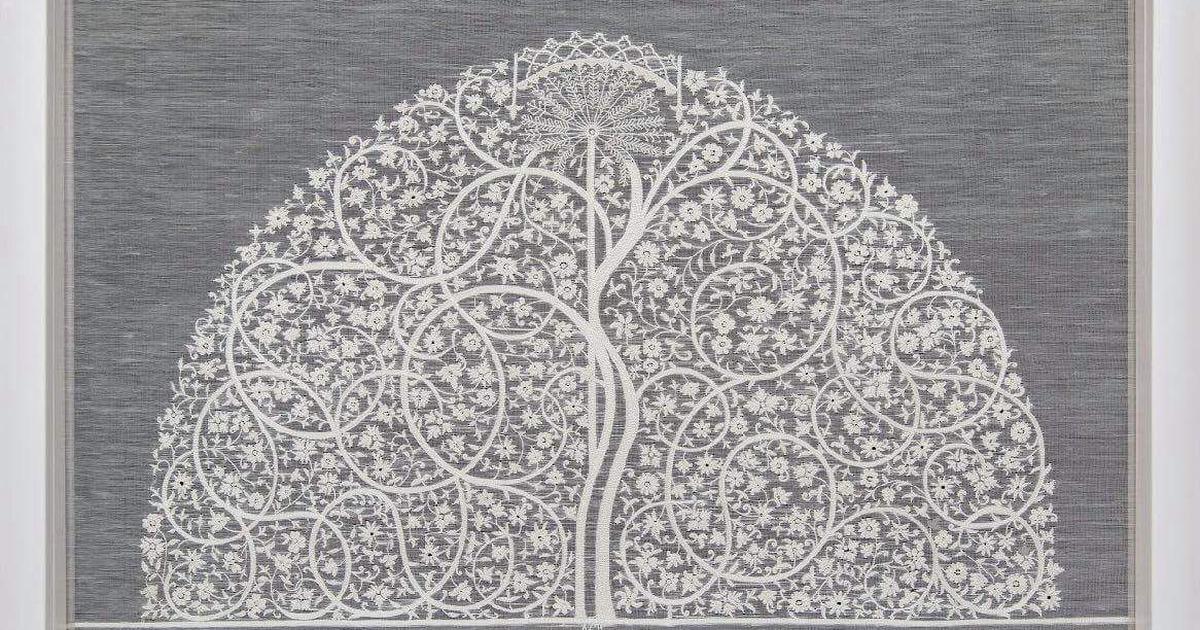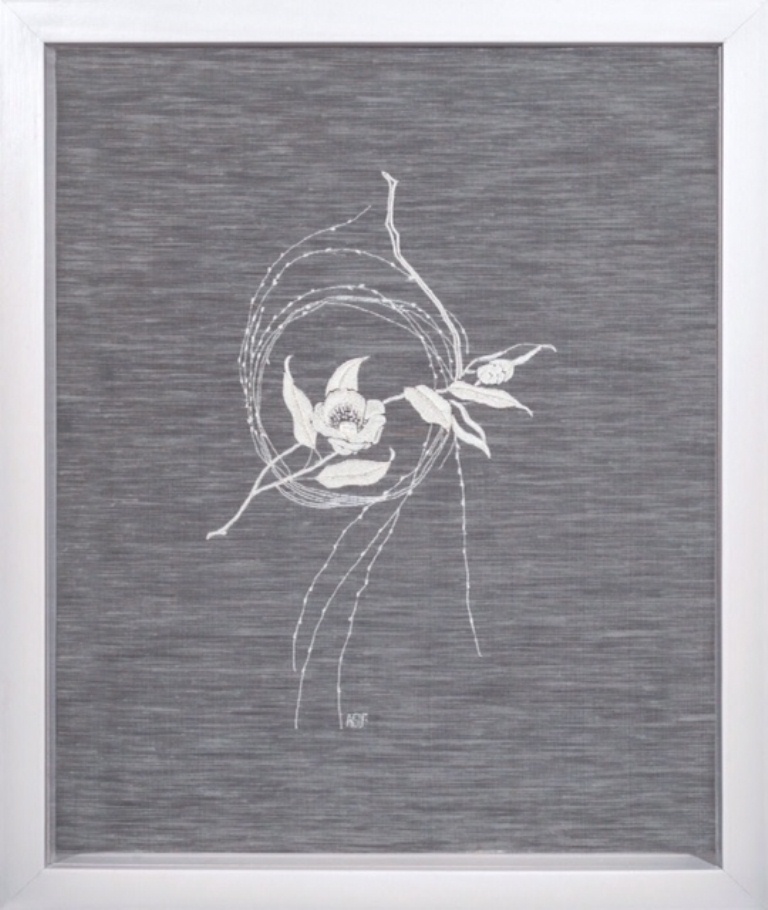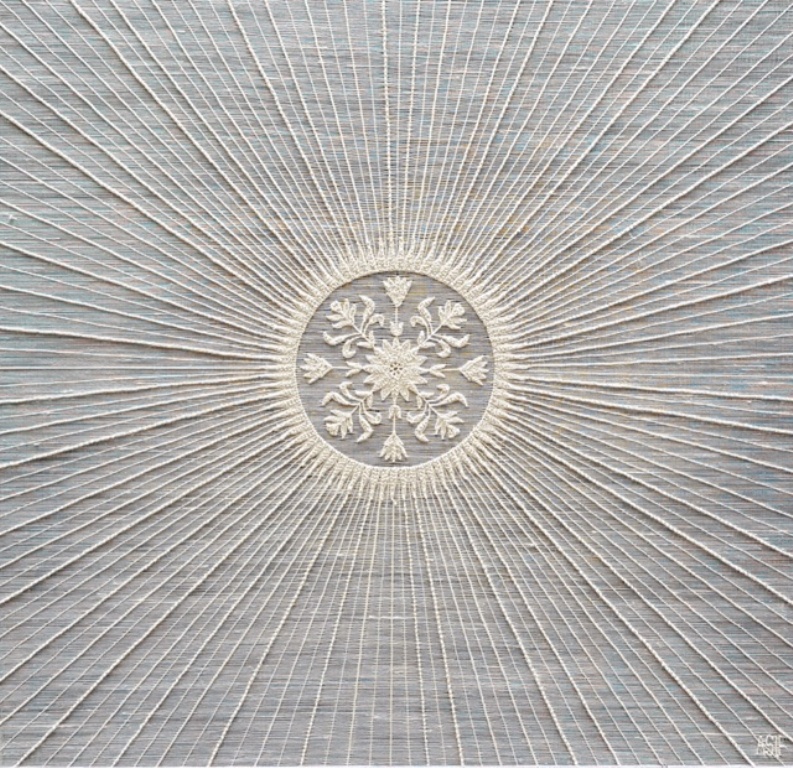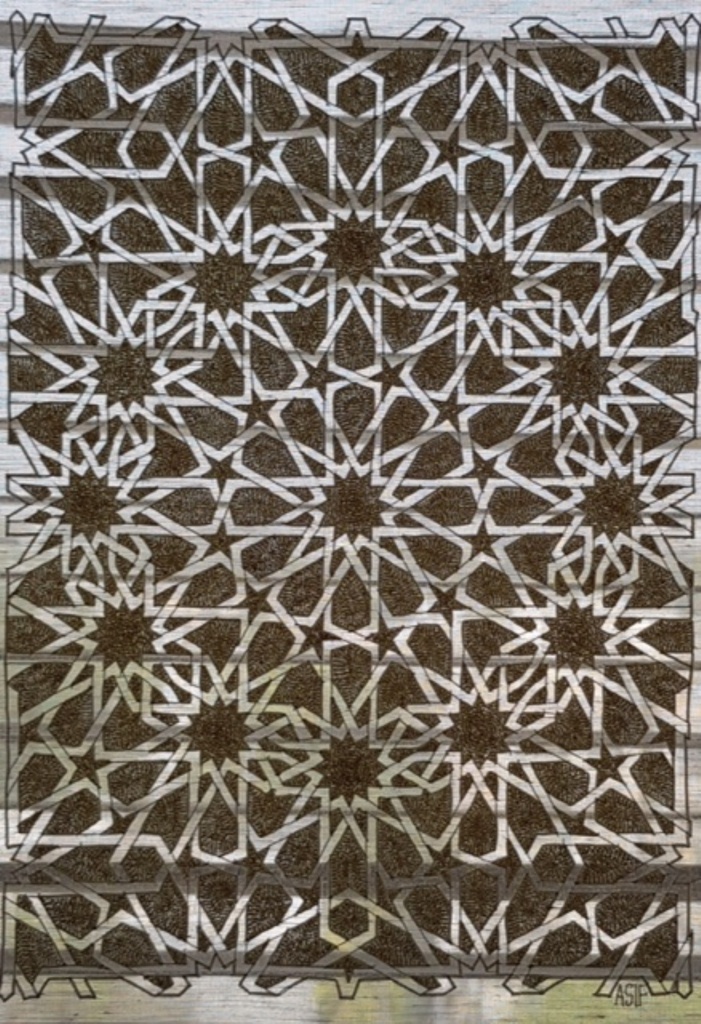Ahmedabad, GUJARAT :
Asif Shaikh’s ornate art pieces are going on display at a design centre in New York.

In his teens, Asif Shaikh had tried hard to draw the famous tree of life latticework screen in the Sidi Sayyed Mosque of Ahmedabad. He was stippling a lot those days, making images out of minute pencil dots in the manner of old halftone newspaper prints. Though many admired the drawing, Shaikh was unhappy. It was not as perfect as the original.
Some three decades later, by now a master designer and embroider, Shaikh attempted the tree of life again. This time with the aari (awl) needle and gossamer-thin Thai silk yarn on the finest handwoven silk-linen from West Bengal. As the minute chain stitches appeared, white on white, he rediscovered his fascination with the ancient stone carving. His long artistic experience allowed him to render it perfectly in his own medium.
The Sidi Saiyyed mosque built in 1572, the final years of the Gujarat Sultanate, has 10 latticework panels that represent the best geometric designs. “There is an easy symmetry in the looping branches of the tree, the leaves and flowers,” said Shaikh. “And in the centre, almost imperceptible, is the strong straight Cyprus. I find it spiritually comforting.”
Shaikh’s show, Sacred Geometry, opens on August 2 at a New York design centre owned by the furniture designer Tucker Robbins, and will be on view for nearly two weeks. This, like his earlier exhibitions, will have exquisitely embroidered art pieces – high-end wall decor – which clients have already started to book. The essentially white-on-white collection is an ode to Ahmedabad: all the designs having been inspired by the stone and wood jaalis in historical monuments around the city.

With the Historic City of Ahmedabad, founded by Sultan Ahmad Shah in the 15th century, receiving World Heritage Status in July 2017, Shaikh’s celebration has new relevance. As a child he lived in the city outskirts, but the fort, mosques, tombs, havelis and later-era Hindu and Jain temples captivated him. Apart from the Sidi Saiyyed, he was inspired by the Rani Sipri Mosque, Sarkhej Roza and the Jama Masjid of Ahmedabad.
He however doesn’t make exact copies. Rather, he approaches them as a modern painter would, with his own perceptions and interpretations. “I don’t like spelling it out to the viewer,” said Shaikh. “I want them to appreciate or reject the designs freely. They should suggest their own titles to the pieces.”

In one work Shaikh has used parallel flowing lines. To some they may seem like rivulets but he was thinking of roots. The roots of a tree are never seen, he explains, yet they are the strongest part of the tree, holding it upright and sustaining it through all kinds of weather. “I was also thinking of my own roots, the ancient artistic traditions which are beckoning to me now. But I can never fully comprehend all that is latent in my cultural origins, so I have left some threads hanging free beyond the border.” There are two other patterns – with a circle in the centre and straight lines – where he has tried to create an optical illusion with close parallel and concentric lines, once again trying to grasp that which is mostly invisible. “The Sun’s rays are visible only occasionally when there are clouds,” he says. “But to viewers these two frames might suggest other things.”
Shaikh is completely self-taught. He used to sit for days watching old embroiders at work and practiced at home. He signed up for formal training as interior decorator but gained fame for his embroidering skills, long before he graduated. Today he is happy spreading the word on Indian craft traditions and developing new techniques for the artisans who work with him at his studio in Ahmedabad. For his use, he redesigned the Mughal-era frame for needlework called the Karchoibe and came up with new stitches.

For Sacred Geometry it was difficult to render the design on fabric, especially with thread that was one-fourth the width of normal embroidery thread. Shaikh is upset that he could not source silk embroidery thread from India and had to buy it from Thailand instead. “India was producing the twisted silk yarns needed for embroidery even a few years ago in Bangalore,” he said. “But now all you get is rayon. I cannot understand why silk yarn is not produced locally.”
His studio team of embroiders had never done anything like this before and they had to be guided step by step. The ancient artisans, who worked on wood, marble and sandstone, often used both the surface and the perforations for effect. To achieve that on cloth was difficult. Scholars claim that textile patterns were chosen by the early followers of Islam to make their monument as distinct as possible. From the close association of artists, mathematicians and philosophers emerged a unique form of decorative art that abjured human and animal forms for pure geometry. The patterns often repeated over and over again, mirrored in reverse colours and at times seeming to extend infinitely beyond borders seem to carry a philosophic message.
But Shaikh does not lay too much stress on the religious aspect because of the “rather sad trend in India today of labelling everything by religion”. Shaikh was witness to the murderous 2002 Gujarat riots and has since seen ugly discriminations. He was one of the victims when his neighbourhood in Ahmedabad was attacked by a rampaging mob in February. He suffered head wounds and had to be hospitalised. For months he couldn’t work. “Ahmedabad is like the rest of India, he said. “Congested roads, filth…we have it all. But like the rest of India there is also unbelievable richness and beauty of art and craft. And people, who will appreciate and support you, no matter what. I am proud to hold up this tiny fragment of heritage to the world.”
source: http://www.scroll.in / Scroll.in / Home> Magazine > Thread The Needle / by Sebanti Sarkar / July 24th, 2018








